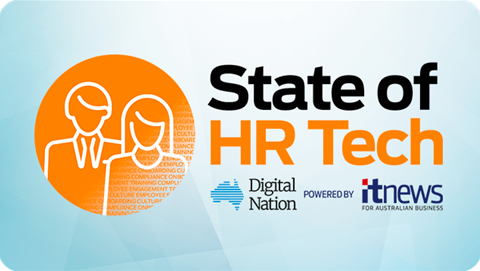When Chris Rathborne arrived at Moreland City Council in early 2019 he found - among other things - major payroll and HR system projects that had been underway “a fairly long time”.

His approach to turning around this situation? Digital thinking.
“Since coming on board here, we've broken them down to MVPs [minimum viable products] and then started iterating on that,” the chief information officer says.
“Within about four months, we've turned the projects around to having them just about finished implementation.”
Rathborne credits open source and the embrace of new ways of working - such as iterative development - for the change.
“It’s about getting in and doing things, choosing smaller iterations and accepting that might not be the perfect fit but that you'll learn something, iterate on it and keep getting better each time,” he says, adding that for council, “it’s a new approach”.
“There's controlled risks around what we've done, but it's really taken the whole council in a positive direction because they're really getting behind it.”
Rathborne anticipates further change to result from a recent wave of new hires.
“We're looking at hiring people that come from other industries, because we're looking for innovatio and experience to bring back to council.
“The right fit is around the type of person that lives and breathes digital but wants to share and help people grow in that direction.
“We're finding that's having an extremely positive experience on a lot of the staff internally. They're seeing this stuff get done, and they want to be a part of that.”
He’s also asking staff about future directions they want council to adopt. They’re then participating in hackathons to come up with solutions.
The future directions were gathered through a series of what Rathborne calls “ignition workshops”.
“Out of the ignition workshops, we came up with the ideas,” he says. “The ideas had to mean something to council.
“The first one is to focus on waste and resource recovery and how we might reduce waste generation in the communities. The second one is financial sustainability, and how we might use data collaboratively to create efficiencies and opportunities for the community.”
This month [September 2019], Moreland will host a hackathon with the Municipal Association of Victoria; Rathborne sits on the association’s executive committee for technology.
“That's looking for digital to solve a number of council and community problems, which is something we haven't normally done,” he says. “It'll involve community members as well. In addition, Moreland, Glen Iris, City of Yarra, Boroondara and Port Phillip [councils] are all coming here to participate.”
Getting predictive

For Gartner research director Dean Lacheca, the spectrum of activities that come under digital in local government is part of what makes the sector so interesting. He sees “three really broad buckets” of activity.
“We've got what we would consider to be digital local government,” he says. “I'm looking at things like, ‘I need to look at digital operations’, ‘I need to be digital end-to-end’, ‘I'm looking at data driven decisions’, or ‘I'm trying to augment the capabilities of my workforce’,” Lacheca says.
“Many of those are common [drivers] across local, federal and state governments, but local has a lot of on the ground people so it's got its own challenges.”
The second bucket of activity - “which is, again, somewhat common, but local government has their own slant on it” - is citizen-centric capability. Local governments want to be outcome-driven and deliver direct value to citizens - and tourists - seamlessly.
For City of Melbourne, its citizen-centric focus is about “trying to make liveability easier” for the 160,000 residents that live in its 37 square kilometre constituency.
“We took a really customer approach to liveability,” technology partnership and sector innovation manager Daniela Mazzone told a recent Salesforce event. “What does a customer need from us and how can we help them?”
Two years ago, when City of Melbourne began its digital journey, it was about allowing citizens to report problems with council services that they encountered “when they're out living their lives”.
“There's a broken swing, or a pothole or some graffiti or syringes that that makes the place unsafe. Very easily from their mobile phone with two or three quick steps, citizens were able to report those services,” she says.
“We thought, ‘Wow, that really makes us innovative and digital.”
But, she notes, citizens didn’t necessarily “want to sit in a park and have to tell us their problems”.
“We should be protecting their services,” Mazzone says. “So that's what we're doing now. We have the ability to predictively manage a case.
“I'll give you an example. One of the great exciting things that we're doing is connecting smart meters or IoT to Salesforce where a case will be created, so that customers don't have to tell us they have a problem.
“One of them that we're doing is smart parking meters - say you get to a parking meter, and you want to pay for your park and you find it's broken. You're like, ‘Oh, that's a problem’. We think that's a problem too.
“[We used to] ask you to text us or call us to tell us that it's broken, we’d lodge a case and it would get routed to the contractor to fix. Now we have a smart meter that can tell us when it is broken, it will automatically initiate the case, and the case is routed to the contractors who fix it.
“No customers or staff have touched that transaction until it's out in the field, and the people that actually work to make our city better can fix those issues. For any asset that we can put a sensor on, we can create that [same experience].”
Sensing smart cities

Lacheca sees many councils driving smart city initiatives, though he categorises the efforts more broadly under the desire of local governments to become “digital destinations.”
“I might be looking at smart cities, or at economic development, innovation, public safety and community development,” he says.
Councils were likely to have very different reasons to develop as “digital destinations. A small satellite city that's really focused on their residents and getting them more effective public transport and better commuter, better parks will have a very different motivation to a city trying to deal with mass tourism.”
Moreland City Council is one of five councils contributing to the Northern Melbourne Smart Cities Network.
“We're putting in smart sensors across all major suburbs in northern Melbourne, measuring water and air quality, water levels, people, vehicle movements, assets and garbage,” Rathborne says. “It's also creating an open network, which will be open to the public and to businesses to be able to create their own applications and use.”
Rathborne believes that smart cities generally will “deliver literally waves of data to us that currently none of the councils are equipped to manage themselves.”
Announceability vs. value

Moreland is approaching that challenge on several fronts: by embracing an open source approach, by looking to artificial intelligence and advanced analytics to understand the data, and by collaborating with universities to access skills.
“We're partnering with La Trobe and Swinburne University because they have the data scientists that we can leverage as part of this project,” Rathborne says.
“We're looking to match smart city data against other things like social media, for example, and to start to get predictive around what's happening in those areas.
“If we're collecting water levels and water quality across some of our major waterways, we want to match that data up with what we can get from Bureau of Meteorology data, for example, so if you see water levels falling, and you're expecting rain next week, you can get predictive around the water in a particular area.”
While councils have different reasons to go digital, Lacheca believes those that find the right balance between internal digital capability development, citizen-centric services and smart city projects stand the best chance of achieving success.
“Different local governments are putting sometimes disproportionate weight on any one of those three,” he says.
“You might have ones that are really trying to be announceable, who do a lot of things around smart cities.
“Others are all-in on their service delivery, and they'll talk to you about the fact that they're doing citizen portals, different payment channels and different options.
“We find those that are really heavily focused on the marketability of saying they're a smart city can often be lacking in some of the other [sides of digital capability]. It's all about that balance.”
For Mazzone, the focus is typically determined by what will generate the most value for council.
“We are government,” she says. “We have really tight budgets, and we need to always show our value.”
Value, in City of Melbourne’s case, is achieved by “releasing our resources to put them back to where they're needed on the street. That's where the City of Melbourne is spending its energy.”
Going mobile

Sometimes a single app significantly changes the way councils manage their resources.
For example, just look at how Moorabool Shire Council near Melbourne has modernised its maintenance operations by deploying Civica’s asset management app, Reflect.
Before the council started using the app in 2018, its field teams didn’t have a common digital platform for managing the inspection and maintenance of roads, footpaths and other assets. Managers allocated work orders manually and field teams didn’t use a common system to report when they’d finished work.
This not only made asset maintenance tracking labour intensive, it reduced confidence that data was accurate and made it hard for staff members to quickly verify the status of repairs. This also made it challenging to demonstrate compliance with adopted levels of service.
That’s changed with the introduction of Reflect. Now, maintenance work is allocated to appropriate crews automatically, using on location data and information collected during inspections. Crews’ GPS-equipped devices indicate the specific location of defects.
Field workers and contractors record information, which is displayed spatially in the Council’s systems. So, when members of the public call to report a defect, the council can now provide accurate information.
Team leaders and management now have a better overall picture of asset maintenance, which helps them to operate more proactively.
The rollout has been so successful that Moorabool Shire Council has expanded its use of Reflect to cover the inspection and maintenance of bridges, trees, public amenities and playgrounds, in addition to roads and footpaths. It also plans to use the system to manage council buildings and public open spaces.
Roles expanding

The role of council IT departments is evolving as they tackle these projects.
For the Reflect rollout at Moorabool Shire Council, the asset management department managed the procurement of the software and the IT team provided important input. It checked the project was in line with IT maintenance, integration and security policies, and was involved in change management (through a project control group). It also plans on integrating the app with geographic information and customer request systems.
Digital governance is also part-and-parcel of the ICT team’s role at Maranoa Regional Council, in south west Queensland. Earlier this year it led the rollout of Actus, the mobile app for Civica’s Authority CRM system.
Maranoa Regional Council’s ICT team procured and deployed the software to address security and IT sustainability issues, particularly focusing on reigning in the use of multiple apps for the same purpose.
The project has streamlined the way the council manages customer requests. Field officers now know exactly where they’re needed and can quickly document their work using mobile devices. This keeps customer service teams in the office well-informed about the status of each customer request and helps managers plan the use of resources.
With the right software, governance and technical skills, these IT teams are creating a new benchmark for efficiency within local government.



.png&h=140&w=231&c=1&s=0)
_(20).jpg&h=140&w=231&c=1&s=0)
_(22).jpg&h=140&w=231&c=1&s=0)



_(26).jpg&w=100&c=1&s=0)

 iTnews Executive Retreat - Security Leaders Edition
iTnews Executive Retreat - Security Leaders Edition












_(1).jpg&h=140&w=231&c=1&s=0)



